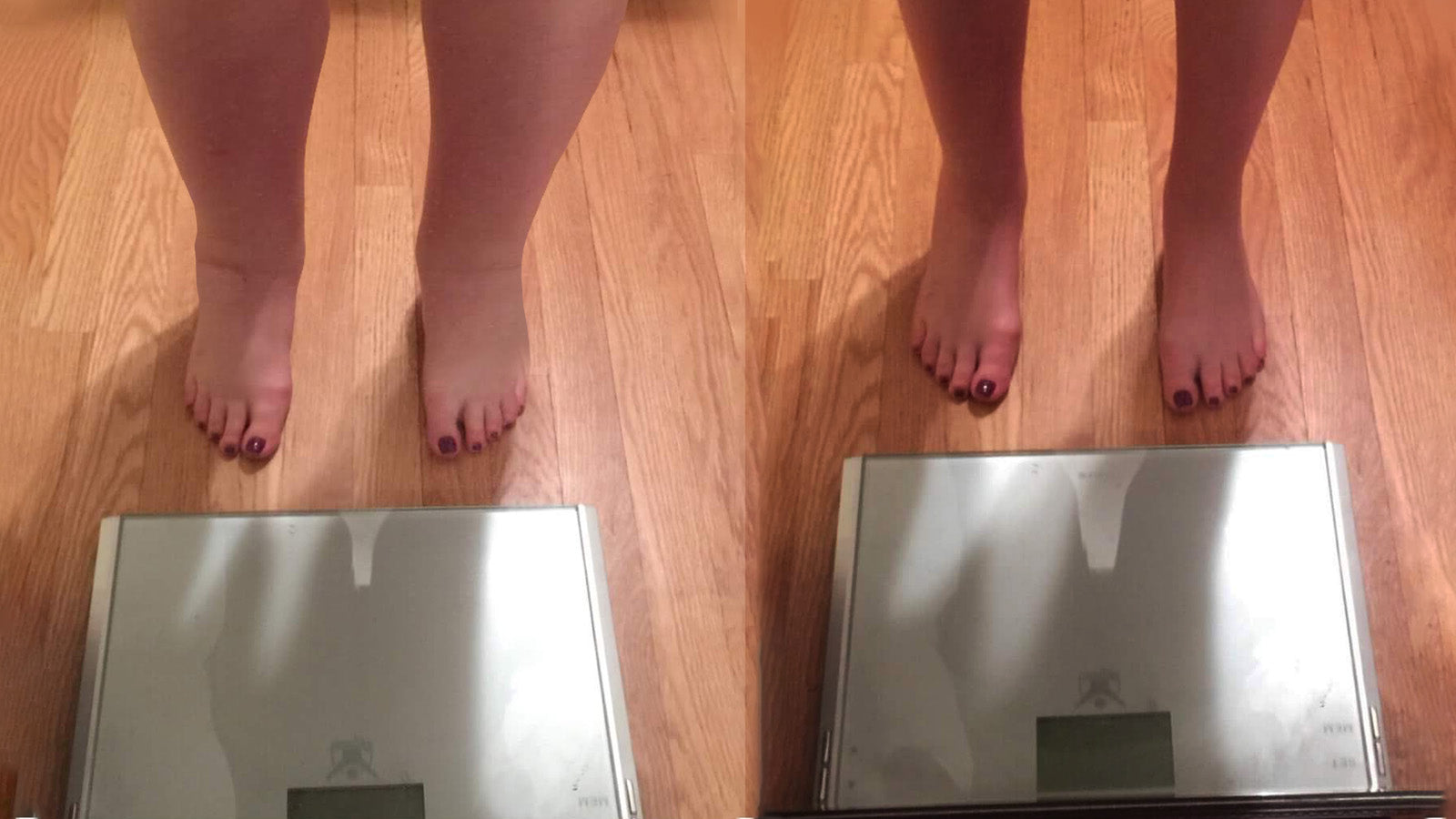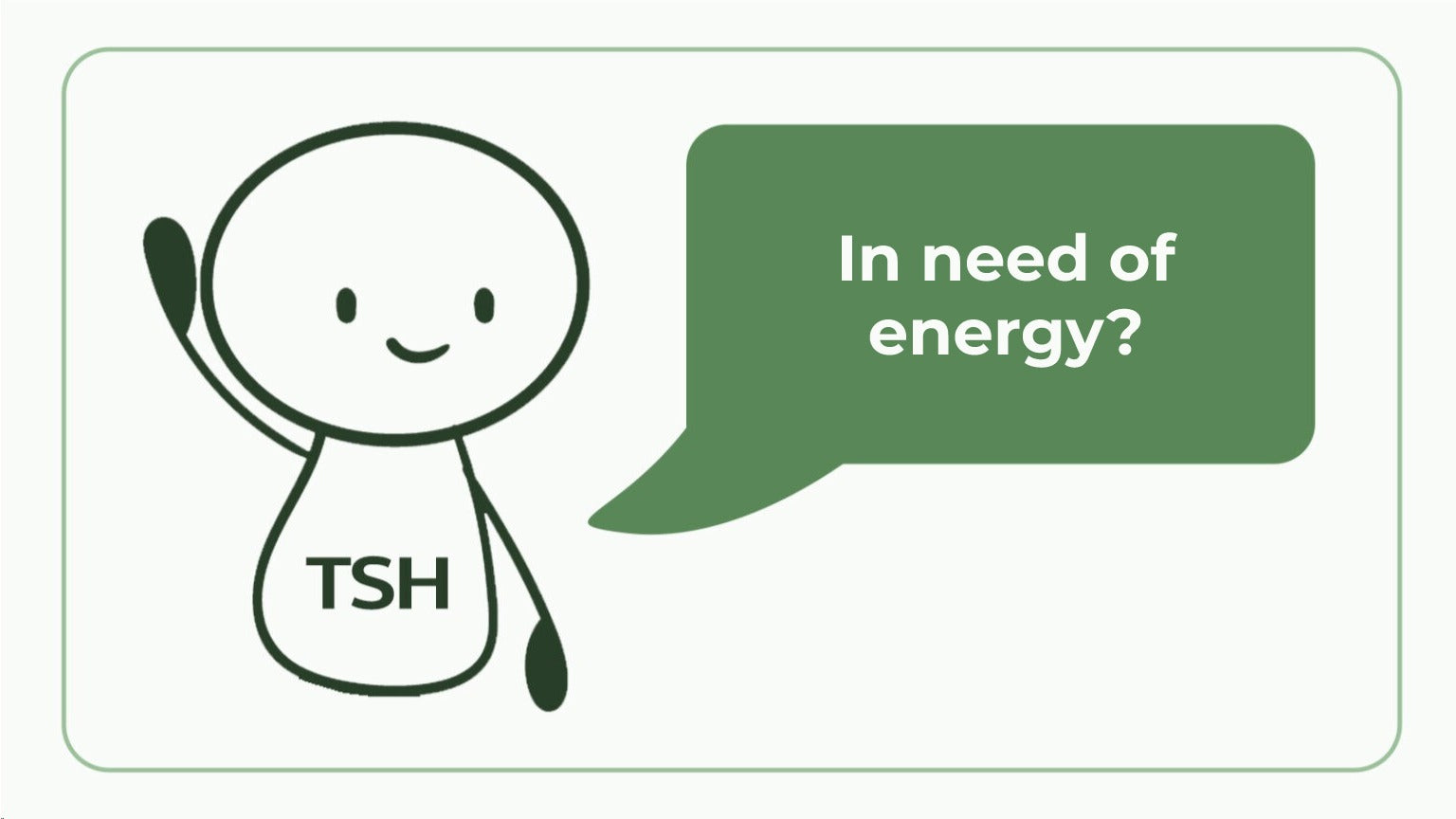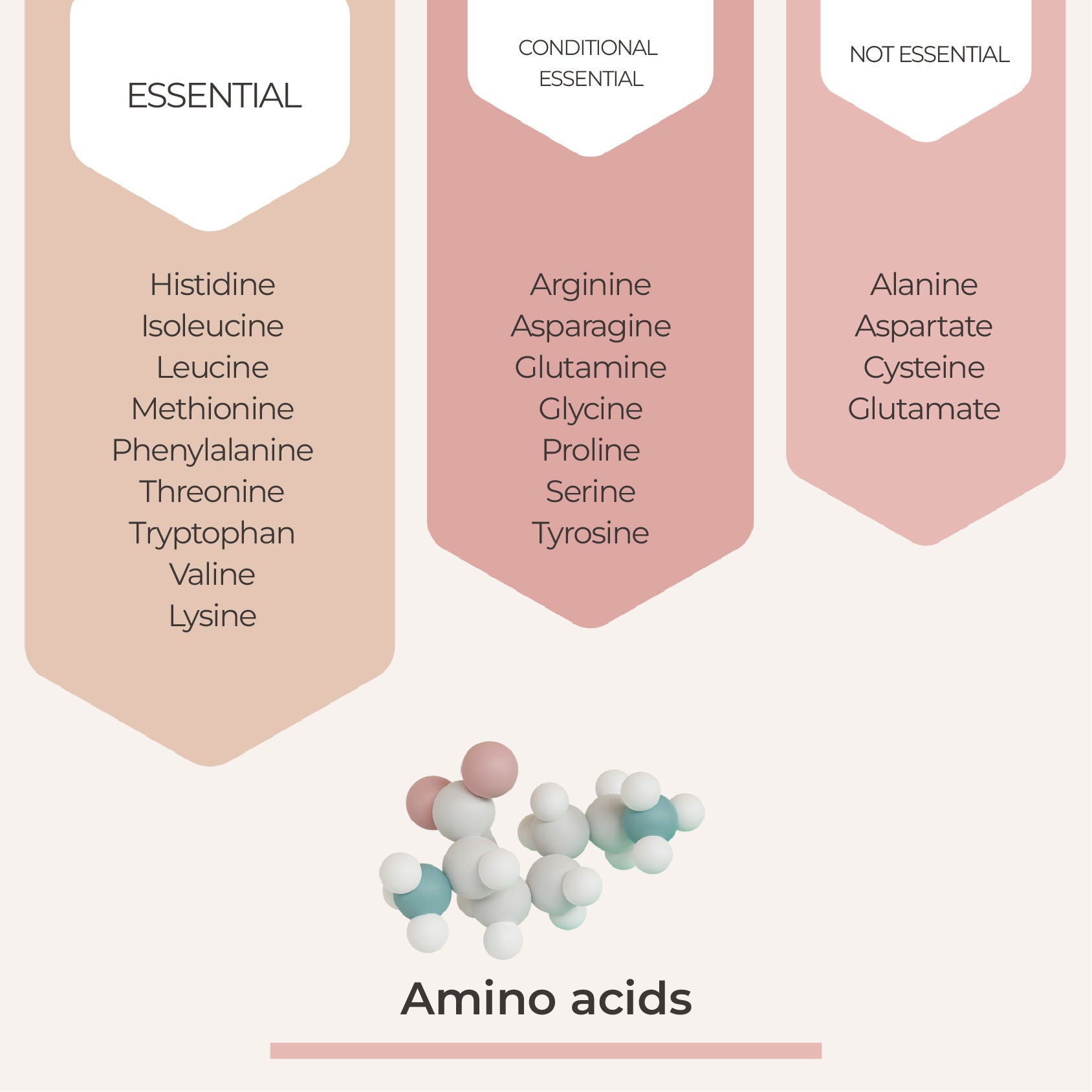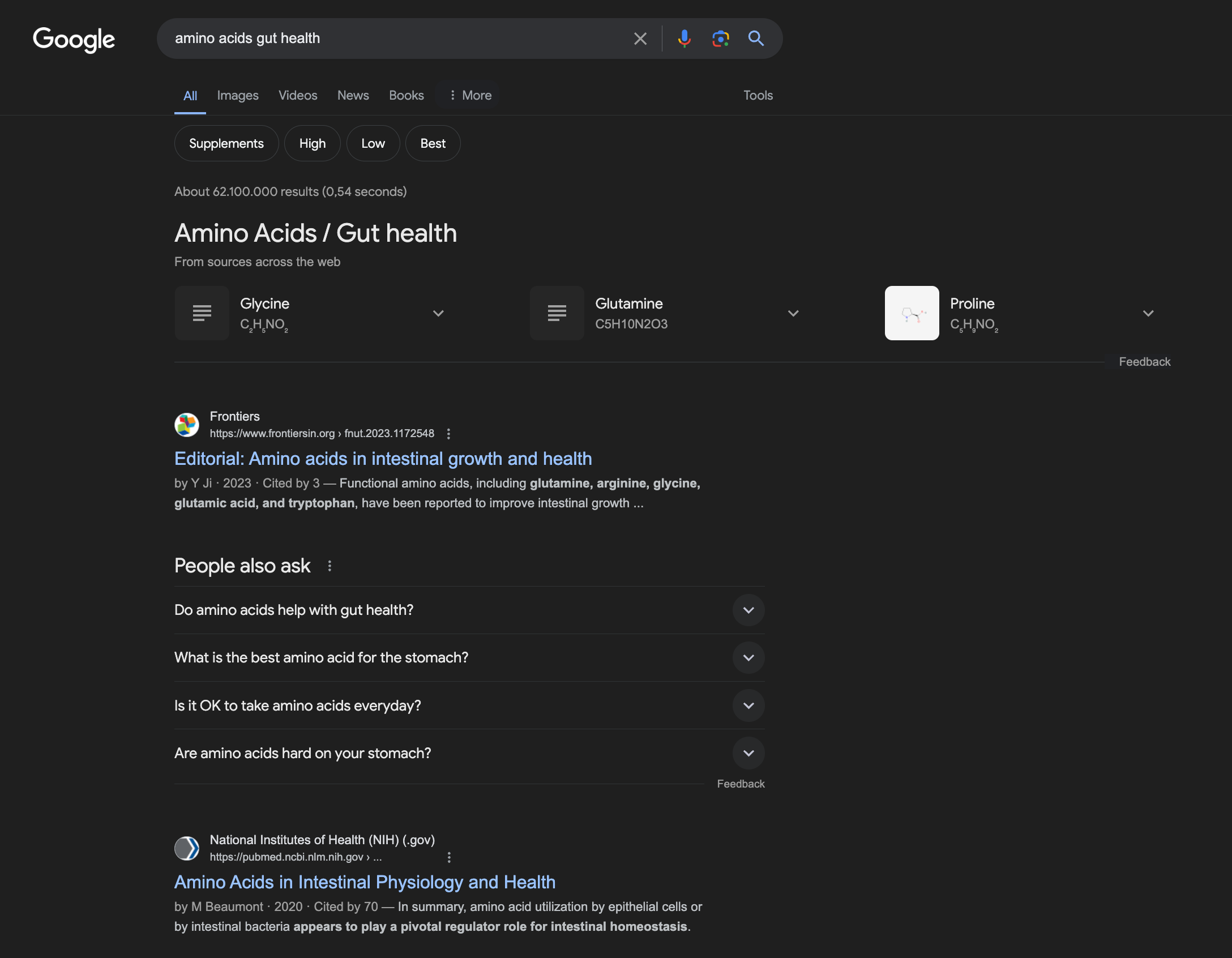The Missing Piece of the Hypothyroidism (Inactive Thyroid) Puzzle
According to the doctor, you're well "adjusted". But do you still have complaints such as constant fatigue, hair loss and weight problems?

Hello, I'm Melissa Wright and 8 years ago I was diagnosed with hypothyroidism.
I felt tired and lethargic constantly, had intestinal problems and gained weight for no apparent reason.
Despite a healthy diet, it seemed almost impossible to lose even one pound.
And this despite the fact that I regularly ate less than my body burns according to various calorie calculators.
But the worst part was the constant fatigue .Almost every afternoon I completely collapsed.
The medicines prescribed by the doctor helped initially.
What I didn't know at the time: an underactive thyroid sounds harmless, but leads to various problems in the body.
The thyroid is like the control center in the body when it comes to energy production and hormone regulation.
Thyroid problems often lead to the liver becoming weak and digestion no longer working optimally.
The problems are piling up and it is difficult not to end up in a downward spiral.
Looking back and armed with today's knowledge, all of my symptoms made sense.
Over the past two years, I have been able to manage almost all of my symptoms and turn the downward spiral into an upward spiral.
My thyroid levels are back to normal, although I was able to reduce my thyroxine dose from 125 micrograms to only 25 micrograms.
Feeling firsthand how negligently and sometimes medically questionable most doctors treat the topic of thyroid (most simply prescribe a drug like L-thyroxine and increase the dose from month to month), I decided to tell my story to help with to share with you...
In this blog you will learn:
- the role of the thyroid gland and its connection to the liver
- why you still have complaints despite thyroxine (T4), even though your blood values look good
- why even zinc and selenium often don't help
- the most overlooked piece of the puzzle when it comes to thyroid problems

My transformation
Back to my personal story
When I had enough of my constant fatigue, I went to my doctor and had a blood test done.
My doctor noticed that my TSH level was elevated.
Of course, I didn't know the value at the time.
But my doctor knew it was important.
It was said: “The higher the TSH level, the less thyroid hormones there are, the more likely it is that there is hypothyroidism (or an underactive thyroid gland).”
For me the value was 5.
The reference range is 1 – 2.5.
When I was diagnosed with hypothyroidism, I was initially relieved.
I was no longer completely in the dark.
At least I had an explanation for my suffering.
My doctor gave me hope that we could resolve this.
After all, I am not an exceptional case.
If you adjust the medication properly, everything should be fine again and the complaints should disappear.
This brings us to the topic of 'correctly adjusting' the medication.
If you also suffer from hypothyroidism , you probably know this:
Your doctor will prescribe L-thyroxine – the classic against thyroid problems.
My doctor initially prescribed me 25 micrograms of L-thyroxine.
L-thyroxine, an artificially produced thyroid hormone, is the most prescribed medicine in the Netherlands after painkillers.
“Now that you are properly adjusted again, your thyroid should function normally again and produce sufficient hormones.” My doctor said.
Full of hope, I went to the pharmacy, got the thyroid medication and took it for a while.
Somehow nothing happened except I took the pills as part of my morning routine.
A month later the doctor increased the dose from 25 to 50 micrograms.
I went to the doctor again and was told, “Hello Mrs. Wright, your blood counts have gotten much better.”
Yes, my blood values were fine.
But what good is optimal blood values if I feel weaker than ever before?
So my ordeal continued until I reached a total dose of a whopping 125 micrograms of L-thyroxine.
The blood values became even worse and the complaints became even worse.
Blood values were good, but I felt weaker than ever before.
With this in mind I started looking for a solution.
Also mainly because it is extremely frustrating when the doctor constantly tells you that the values look good and that there is not much we can do about it.
And because constantly taking synthetic thyroid hormones is not healthy for the liver in the long term.
It was clear to me: I had to take matters into my own hands.
It was last year, in 2022, at Christmas, when I made the crucial discovery.
My best friend gave me a book for Christmas.
She knew I had problems with my thyroid.
The book covered the topic of thyroid health and Hashimoto's disease.
Normally I'm always skeptical about these types of books, but I wanted to give it a chance.
The author himself had an underactive thyroid and knew the symptoms I was experiencing all too well.
From obesity to metabolic problems to lack of motivation , everything was there.
She was also not taken seriously by the doctors and had to take her fate into her own hands.
And what a miracle, otherwise she wouldn't have written a book:
She managed all the symptoms very well.
Curious, I started reading...
A discovery that changed my life forever.
The author managed to explain in a humorous way what happens to the thyroid gland.
In the book I read that an elevated TSH value means that thyroid hormones cannot be produced .
The abbreviation “TSH” looked very familiar to me from my blood work.
TSH regulates thyroid activity.

The pituitary gland sends a signal to the gland:
“Dear thyroid, please produce hormones, we need energy.”
Energy for a wide range of things, such as:
– Warmth when you are cold
– Energy to wake up
– Cycle regulation
– Regulate the digestive tract
– Stimulate hair growth
– etc.

But something wasn't right with me...
According to the doctor, my blood values were back to normal and he said that my TSH level had stabilized again.
But my mood became worse and worse day by day.
I really wondered what had to be done so that not only the blood values improved, but also the symptoms?
I read in the book that unfortunately it is not enough to get the thyroid gland to produce more hormones again:
The thyroid hormones must be converted into an active form and then transported into the cells.
For this process to work, you need a well-oiled system

Only if these steps fit together perfectly can energy production in the cells work.
Then we are bursting with energy , we are no longer tired and we no longer have cold feet.
When your metabolism kicks back into gear and the sluggishness is over, you can probably imagine what will happen to your weight .
You won't believe it.
I will explain to you how you can get the thyroid gland working properly again, so that energy (and your life) returns.
Step 1: Make thyroid hormones again
Once the TSH hormone sends the signal from the pituitary gland, it starts.
Something special is happening in the small cells of the thyroid gland.
There it mainly produces the thyroid hormone thyroxine (T4).
T4 is known as the inactive thyroid hormone and consists of the amino acid tyrosine and four iodine atoms.
Most doctors only focus on this.
They see an elevated TSH level (and perhaps a low T4 level, if they check at all) and simply prescribe L-thyroxine, or T4.
As almost always, they simply combat the complaints with medication.
Unfortunately, that alone is not enough.
Step 2: Activation of thyroid hormones (T4 –> T3)
However, your body cannot do much with the thyroid hormone thyroxine (T4) alone.
In principle it is only a preliminary stage.
Only when the inactive thyroxine (T4) is converted into the active thyroid hormone triiodothyronine (T3) do magical things happen in your body!
How?
By splitting an iodine atom from T4 – with the help of enzymes.
This activation largely takes place in the liver and is called 5′-deiodinase.
The 5′-deiodinase enzymes are responsible for converting the thyroid hormone thyroxine (T4) into its active form triiodothyronine (T3).
Step 3: Transport of T3 into the cells
Your thyroid hormones have been activated and now want to release energy into the cells.
But how do they get to their destination?
This is achieved with the help of so-called transport proteins.
The transport proteins need the right nutrients for this transport in the blood and in the cell.
Once the thyroid hormones arrive in the cells, energy can be produced!
Back to my thyroid values
My TSH level was back to normal and my T4 level was also in the good range - all thanks to taking L-thyroxine.
So everything was fine for my doctor.
My body had enough T4.
But I still felt bad.
That means my symptoms could only have come from there
- either T4 could not be converted into the active T3,
- or that the T3 could not connect to my cells.
There were only two options.
In any case, it couldn't have been because my T4 level was too low.
Why does the conversion from T4 to T3 often not work?
We remember: T3 activation occurs mainly in the liver.
And there is an indicator that shows whether T3 activation (5′-deiodinase) can proceed properly:
The glutathione level.
The thyroid expert Dr. Dorothea Leinung writes in one of her specialist articles:
“When our thyroid produces thyroid hormones, it also produces free radicals. If there is not enough glutathione to control this oxidative stress, too much can affect other tissues.”
As early as 1988, a link between glutathione and T3 activation (5′-deiodinase) was established and documented in a study.

Glutathione is the most common and very powerful antioxidant in the body.
This is why it is sometimes called the most important antioxidant.
And note:
It consists of three amino acids: cysteine, glycine and glutamic acid.
Another study shows that the amino acid L-methionine plays a key role in the liver against oxidative stress.
Methionine is a precursor to cysteine, one of the three amino acids of glutathione.
To summarize the problem:
Simply administering the thyroid drug L-thyroxine (T4) will not help much because it is still in the inactive form.
The thyroid hormone T4 must be converted into an active form T3. This process takes place in the liver.
The active T3 can now release energy into your cells via transport proteins.
Only when these metabolic processes function properly can energy be released and the symptoms of hypothyroidism, such as fatigue, disappear. This way your thyroid gland will function again!
Amino acids play a particularly important role in the conversion of T4 to T3.
Finally I discover the missing piece of the puzzle
After reading these studies in detail, I did some deeper research to better understand the connection between amino acids and thyroid health.
The parallels between thyroid problems and amino acid deficiency became clearer as I did more research.
So I started thinking about whether I could have an amino acid deficiency too.
Most people – including myself for a long time – believe that they get enough protein in their normal diet and therefore get all the essential amino acids.
In fact, this is often not the case!
Women in particular do not consume enough animal protein, which is essential for the conversion of T4 to T3 and the transport of thyroid hormones to our cells.
It's even worse for vegans and vegetarians.
The protein sources are all completely different in their value.
A measure of how well a protein provides all essential amino acids is the DIAAS value (Digestible Indispensable Amino Acid Score).

Animal protein has a much higher biological value than vegetable protein.
In fact, I now believe that most people with hypothyroidism are amino acid deficient.
This is due to 2 things:
Reason #1: We have a much higher protein requirement
People with thyroid problems have a much higher protein requirement.
Because the liver plays a crucial role in protein synthesis, protein breakdown, detoxification and amino acid metabolism.
An overworked liver (which is often the case with hypothyroidism) can lead to a buildup of toxins and increase the consumption of amino acids necessary for detoxification.
If demand is very high, you will run into a shortage much faster.
The standard recommends that a healthy adult consume at least 0.8 g of protein per kilogram of body weight.
However, for Hashimoto's patients (all of whom suffer from hypothyroidism), at least 1.5 g of protein per kilogram of body weight is recommended.
For a woman weighing 70 kg, that is more than 100 g of protein per day.
When was the last time you consumed 100 grams of protein per day?
I have almost never had such a high protein consumption.
Reason #2: Impaired digestion
If you have digestive problems like me, there is unfortunately a good chance that you cannot fully absorb many nutrients.
This means that even if you eat a lot of protein (in the form of meat, shakes, eggs or dairy products), you can still suffer from an amino acid deficiency.
The thyroid expert Dr. Dorothea Leinung writes:
“Many people with Hashimoto syndrome, even when they consume adequate amounts of protein, cannot digest the protein properly and their body cannot absorb these nutrients efficiently.”
This is because the protein supply (so-called proteolysis) does not work properly.
During proteolysis, the protein is digested and the amino acids in the protein are absorbed by the body.
If proteolysis doesn't work, not enough amino acids get into the body.
Even if you have a leaky gut, the MTHFR gene variation, a lack of stomach acid or a bad liver, the proteins you then diligently consume are not properly absorbed.
If you are reading these lines and suffering from the symptoms of hypothyroidis, a crucial question arises:
Do you suffer from an amino acid deficiency or no?
Why does the conversion from T4 to T3 often not work?
#1 Most people are deficient in essential amino acids because the requirements are very high and many people have poor digestion.
#2 The liver – the place where the conversion takes place – is limited in its function. More precisely: the glutathione level is too low and must be increased with amino acids.
Amino acids and the thyroid gland
From that moment on I understood: I need essential amino acids.
I have to get my body back in such a way that it can convert my T4 back into T3 and ideally at some point even be able to produce enough T4 itself (without medication).
The only question was which option to choose:
Option 1: I eat more meat and check which foods have the highest bioavailability,
Option 2: I take the essential amino acids directly.
I chose the quick option.
I call it the “Amino Direct Method”.
By consuming the essential amino acids in their pure form, digestion is not put under pressure.
This was especially beneficial for me because my intestines were still causing problems at that time.
Moreover, it is much cheaper than eating meat every day.
But before I started looking for a suitable amino acid product, I had to figure out which amino acids I absolutely need.
Which amino acids are especially important in hypothyroidism?
First you need to understand a few basic concepts:
- Proteins consist of amino acids arranged in different structures. There are so-called essential and non-essential amino acids.
- The body cannot produce essential amino acids itself . So they have to be brought in from outside.
- The body can produce non-essential amino acids itself. But only if you have enough essential amino acids.

The most important essential amino acids for an underactive thyroid gland
The following amino acids cannot be produced by the body itself and are especially important in hypothyroidism:
L-Methionine for the conversion of T4 to T3
As mentioned earlier, people with an underactive thyroid often have a disturbed detoxification capacity.
Methionine serves as the starting point for the synthesis of glutathione in the liver .
Activation of T4 to T3 in the liver only occurs with sufficient glutathione.
Methionine is also important for the absorption of zinc and selenium.
Suffering from a methionine deficiency will affect the absorption of zinc and selenium – both very important trace minerals for thyroid health.
This means that even if you get a lot of zinc and selenium, there is no guarantee that your body will be able to use it.
L-Phenylalanine to form tyrosine and later T4
Phenylalanine is the raw material for the even more important tyrosine, a basic component of thyroid hormones.
If you supply the body with phenylalanine, it can then produce tyrosine . Tyrosine is then further processed in combination with iodine to form the thyroid hormone T4.
L-lysine against fatigue
Lysine plays a major role in immune cells, so a deficiency makes people more susceptible to viruses. One reason why people with hypothyroidism are sick more often.
In addition, iron requires lysine for its absorption. This explains, among other things, chronic fatigue and exhaustion in patients with hypothyroidism.
If you eliminate the lysine deficiency, iron will be better absorbed and you will feel more active.
The most important non-essential amino acids
Once you have covered all the essential amino acids, the body can also produce the non-essential amino acids itself. Because these are also important:
Tyrosine for the production of T4
Tyrosine is a precursor for the production of thyroid hormones, namely thyroxine (T4) and triiodothyronine (T3).
Without sufficient amounts of L-tyrosine, thyroid hormones cannot be produced in sufficient amounts, which can lead to decreased metabolic performance and other health problems.
In order not to be dependent on the intake of L-thyroxine (T4) for life , it must be ensured that the body always has sufficient tyrosine.
Glutamine, cysteine and glycine
These three amino acids together form the antioxidant glutathione, which is so important for the liver.
As explained above, glutathione is especially important for the conversion of T4 to T3.
But it also has many other positive effects on liver health.

Experts recommend these amino acids if you have an underactive thyroid gland
The genius of essential amino acids
If sufficient essential amino acids are available, the body can also produce non-essential amino acids itself.
For example, the non-essential amino acid L-cysteine, which has a positive effect on thyroid antibodies.
Or the amino acid L-glycine, which is important for T3 activation.
So you get all the necessary amino acids and at the same time you can prevent any inflammation .
The Master Amino Pattern (MAP)
The topic of amino acids is also discussed in the thyroid book I mentioned above – namely in the chapter on useful nutritional supplements.
However, the book does not only recommend the normal amino acids that you can find in any pharmacy.
Amino acids based on the so-called Master Amino Pattern (or Human Amino) are recommended.
The Master Amino Pattern was developed at the International Nutrition Research Center (INRC) in Florida by Prof. Dr. Luca Moretti conducts research.
This involves a very specific dosage and coordination of the 8 essential amino acids .
If these 8 amino acids are dosed and mixed exactly right, the amino acids can be absorbed by the body through the mucous membranes within just 23 minutes.
With 99% bioavailability, so that neither the digestive system nor the kidneys or liver are put under pressure.
It is, so to speak, the cleanest way to provide the body with amino acids without eating protein-rich foods.
By comparison: if you consume vegetable or animal protein , the amino acids must first be split off from this protein during proteolysis (protein digestion).
However, because many people with hypothyroidism also have impaired protein digestion, it is often not even guaranteed that a high-protein diet will provide you with all the necessary amino acids.
If you provide the body with essential amino acids according to the Human Amino pattern, the body can then produce all non-essential amino acids from them.
For this reason, it is extremely important that you actually take amino acids that are based on the Human Amino pattern.
This means that you do not have to take glutathione, glycine, glutamine or cysteine separately.
In addition, it is much better if the body produces the non-essential amino acids itself.
After all, we don't want to hand everything over to the body on a silver platter.
It is important that the body's metabolic processes begin again.
Unfortunately, at the time the book was published (2013), there were no amino acid preparations in European countries that resembled the Human Amino pattern.
Back then you had to order extremely expensive supplements from the US .
Fortunately, this has now changed and there are even some suppliers in the Netherlands who produce and sell essential amino acids according to the Human Amino pattern.
And even at more attractive prices.
Personally, I use a product called Smart Protein blend. It is based exactly on the Human Amino Pattern, is even produced in the Netherlands and specially made for people with intolerances.
And I can already say: for me the Smart Protein blend was the missing piece of the puzzle that provided more energy and better well-being.

On the product page you can also see that the manufacturers work closely with experts specialized in the topics of autoimmune diseases and intolerances.
What finally convinced me were the many positive reviews .
That also gave me a good feeling and I knew I was in the right place.





So how does this Smart Protein work?
Smart Protein consists of 100% pure amino acids, based on the Human Amino Pattern.
It contains exactly the essential amino acids mentioned above, which are so important for people with hypothyroidism.
It also contains 2 other essential amino acids, which also have numerous positive effects:
- L-Isoleucine: Isoleucine is involved in the hormone regulation of the organism. For example, the amino acid stimulates the release of insulin, which stimulates the absorption of glucose and amino acids from the bloodstream into the muscle cells. This in turn is necessary not only for blood sugar regulation , but also for rapid energy production.
- L-Tryptophan: Tryptophan is a precursor to the happiness hormone serotonin and can therefore improve the mood. One study found that people who consumed larger amounts of tryptophan were significantly less irritable, depressed, and had less anxiety than subjects who consumed smaller amounts of tryptophan.
But now comes the really crucial part that sets Smart Protein apart from others.
The amino acids in Smart Protein are obtained from the fermentation of chickpeas in a process similar to digestion.
It is absorbed directly through the mucous membranes and therefore no autoimmune reaction can be triggered.
Smart Protein is free of lectins and lactose , gluten-free, contains no sugar or other additives.
This makes it the ideal protein source for people with hypothyroidism.
The advantage of 100% pure crystalline amino acids is that they have a higher purity than amino acid sources from food and other sources, are easily soluble and are quickly absorbed by the body .
This allows the body to quickly use the amino acids to build and repair tissue .
The self-test - with Smart Protein for better thyroid values
That same evening I ordered Smart Protein in the Greenleaf webshop.
Because there is a one-time discount offer in the store if you buy 3 jars and it was clear to me that this would not cure my hypothyroidism like a miracle cure overnight, I immediately ordered 3 jars.
Perhaps I should mention this again: while some customers mention in their reviews that they feel an immediate improvement, be aware that this is different for everyone and it is often a longer process.
You provide the body with the necessary nutrients so that the amino acid deficiency is eliminated and the body can produce and convert hormones normally again.
The whole thing takes time.
Personally, I gave myself a 3-month ultimatum.
My first weeks with Smart Protein
After just a few days the order arrived with the 3 jars.
There are 90 capsules in one jar.
The recommended daily dose is 3 capsules (preferably in the morning with a meal).
So you can use it for 30 days per jar. I had a 3 month supply.
The packaging is of very high quality and the jar is dark, so that all active ingredients are preserved and are not affected by UV light.
The capsules are medium sized, but they contain a lot.
For now I take 3 capsules a day. I looked it up, but it is actually allowed to take 6 capsules per day at this dose. Maybe I'll try this later.
To be on the safe side, I will continue to take my L-thyroxine – exactly as prescribed by the doctor.
I usually take Smart Protein after the first meal.
Many customers report immediate improvement .
After testing Smart Protein for four days, I knew what they meant.
I immediately noticed two things:
After the first dose I felt energetic . I have never experienced anything similar with any other nutritional supplement. You really feel how your body gratefully absorbs the amino acids.
My usual afternoon slump has completely disappeared .
After a month: better digestion
After almost a month I realized why my afternoon slump had disappeared; this was due to my improved digestion .
And it's no surprise: a quick Google search shows that amino acids can improve gut health .

By the way: the capsules are actually super easy to digest.
Even after 3 capsules early in the morning on an empty stomach, it does not feel heavy.
By the way, my other symptoms also improved.
I feel very energetic all day long.
I feel stronger and more active.
Even my colleagues noticed this.
In the past, afternoons at the office were pure horror because I had no energy at all.
Then it was a matter of going home as quickly as possible and flopping on the couch.
I'm now thinking of joining the Pilates studio again and doing some exercise.
After two months: improved thyroid values
The first 2 jars of Smart Protein are now empty. And I immediately placed a repeat order.
Since I started using Smart Protein, my life has turned 180 degrees.
No more fatigue, no more exhaustion.
Thanks to my improved performance, I was even able to start exercising again.
I also lost about 3 pounds without changing my diet.
My thyroid levels have also improved slightly, which I honestly didn't expect.
After all, Smart Protein is not a drug for hypothyroidism.
Together with my doctor, I then started to slightly reduce my dose of L-thyroxine.
Over several months I managed to reduce from 125 micrograms to 25 micrograms.
I had my thyroid levels checked regularly and listened to my body.
Despite lowering the dose, I continued to feel better.
My TSH is now at 1.
My fT4 (free T4) is in the green despite the minimal dose of L-thyroxine. And for the first time the T3 value is also correct!
Out of curiosity, I also had my liver values checked.
The amino acid L-threonine is said to have a positive effect on fat balance and liver function . I was also able to significantly reduce my medication intake.
And yes: during my last examination my liver values had also improved slightly!
I'm very curious to see what they will look like in a year's time.
In short: my zest for life has returned.
For me, you could say, the past few months have been life-changing.
I'm glad I came across Smart Protein and would highly recommend it to anyone with an underactive thyroid.
I have linked you below to the Greenleaf Blends online shop, where you get £81 discount when you buy 3 jars.
The company behind Smart Protein
Behind Smart Protein is a young business from Rotterdam called Greenleaf Blends.
Greenleaf Blends produces nutritional supplements specifically made for people with intolerances and health issues.
They also work extensively with experts who specialize in the subjects of autoimmune diseases and intolerances.
Click the button now and check the availability of Smart Protein

About the Author
Melissa Wright is 45 years old and has been suffering from hypothyroidism, or an underactive thyroid gland, for years. When she came across a book about the thyroid some time ago, it finally clicked for her. She has delved deeply into the matter for several months and is happy that she has finally found the perfect solution for herself. She has now been able to keep the annoying complaints to a minimum and she feels just as vital and fit as when she was in her twenties! She hopes her findings over the past few months will finally bring clarity to this issue and help other people with hypothyroidism.
Addendum to the article
Since the publification of this article, many of you have asked questions. That is why I would like to briefly discuss the most important ones:
Should I continue taking my thyroid medication in addition to Smart Protein?
Yes, absolutely! Please do not stop taking your medications. Smart Protein is not a drug for hypothyroidism. The amino acids it contains simply support the body in producing T4 and converting it into T3. You can use Smart Protein alongside your medications. If you feel better, you can gradually reduce your thyroid medication in consultation with your doctor. It's best to do this while checking your thyroid levels regularly.
What is the best way to take Smart Protein?
The recommended dosage is 3 to 6 capsules per day. Start with 3 per day in the morning and add 3 more capsules after dinner if necessary.
Can I use Smart Protein in addition to my medications?
Yes. Smart Protein consists of completely natural amino acids. For example, if you ate a very large amount of meat, your body would also absorb a large amount of amino acids. However, give priority to existing medications when taking them. This means, for example, that if you need to take your existing medications on an empty stomach, you should plan the intake of Smart Protein in such a way that there is no conflict with other medications. When you take Smart Protein is generally not that important.
Can I use Smart Protein even if I don't have a thyroid gland?
Yes, even then you will feel positive effects. Amino acids are the building blocks of the body and give you energy, even if you no longer have a thyroid gland.
What ingredients does Smart Protein contain?
Smart Protein consists of 100% of the following amino acids: Ingredients per dosage of 3 capsules: L-Leucine 205 mg; L-valine 141 mg; L-isoleucine 115 mg; L-lysine 185 mg; L-Phenylalanine 72 mg; L-Threonine 141 mg; L-methionine 35 mg; L-Tryptophan 37 mg; L-Histidine 37 mg;
What makes Smart Protein different from other amino acids?
Smart Protein is based on the Human Amino Pattern, which was researched at the University of Florida. It impresses with the purest quality and 99% bioavailability. Moreover, it is produced in the Netherlands under the highest quality standards.
Can I use Smart Protein if I have histamine intolerance?
If you have a histamine intolerance, it’s best to consult with a healthcare professional or allergist before taking this supplement to determine whether it’s safe for your condition.
Is Smart Protein also suitable for children?
Smart Protein is certainly also suitable for children.
Can Smart Protein be taken during pregnancy or breastfeeding?
The use of Smart Protein is recommended during pregnancy and lactation and can be done without any worries.
Is there a guarantee?
Yes! Greenleaf Blends provides a 100% satisfaction guarantee. If you are not satisfied with the product, you are entitled to a full refund within 60 days of purchase, excluding tax and shipping fees.
Will I be charged again later, or is this a subscription?
No need to worry — this is a one-time purchase only. We don’t have automatic subscriptions or recurring charges. You’re in full control, always. If you wish to reorder later, you can do so at any time — no commitments required.













Answers
Sources (original studies in English):
Effects of glutathione on iodothyronine 5'-deiodinase activity: https://pubmed.ncbi.nlm.nih.gov/3383773/